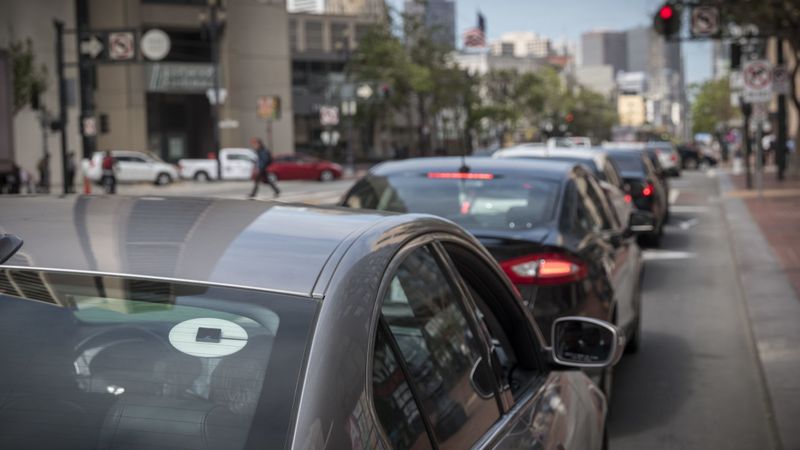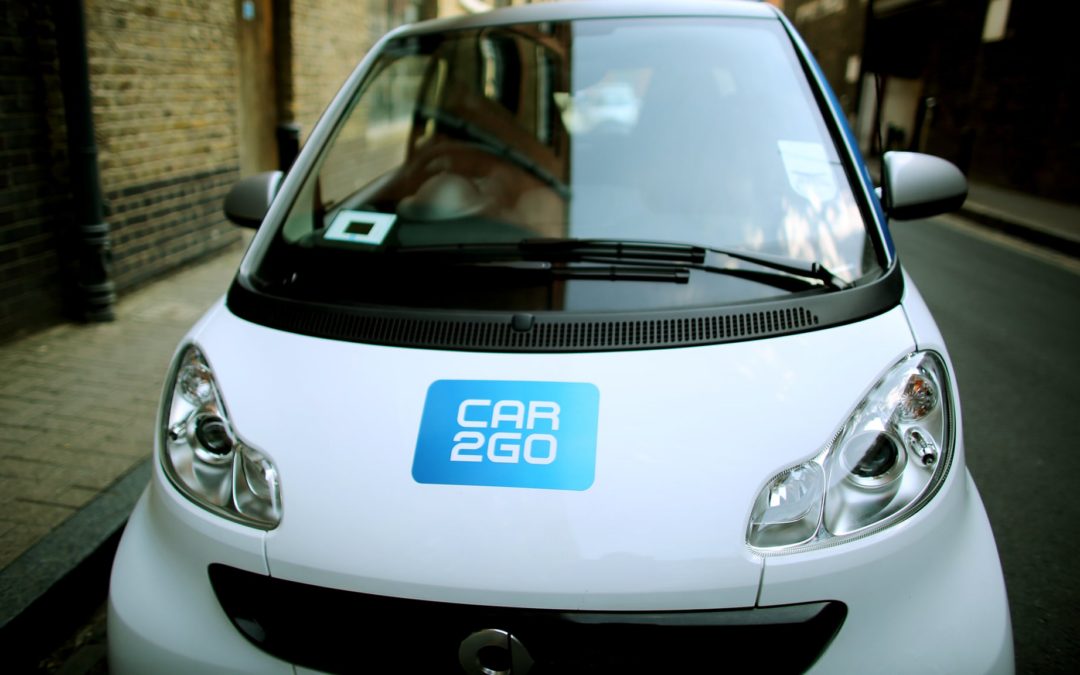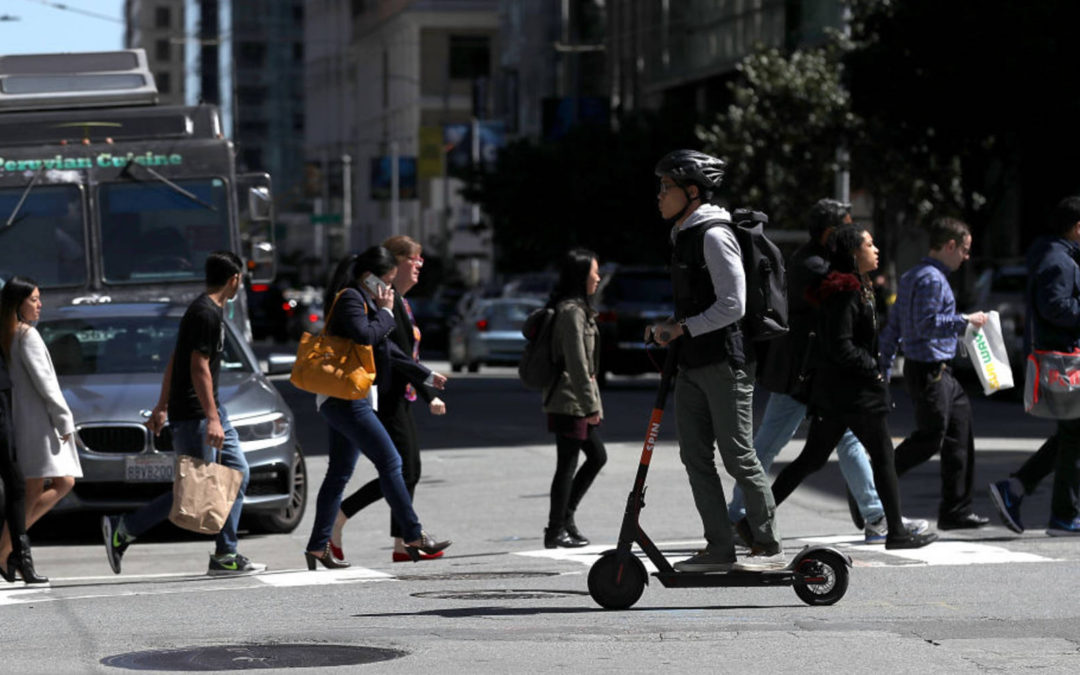
by Innovative Mobility Research | May 8, 2019 |
Julia Rosen May 8, 2019 Ride-hailing services like Uber and Lyft are so popular in San Francisco that they have become the single biggest factor behind the city’s increasingly snarled traffic, according to a new report. Researchers analyzed millions of trips and concluded that the services accounted for more than half of the 62% increase in weekday traffic delays between 2010 and 2016. They also found that many of the cars offering rides via Uber and Lyft did not reduce or replace private vehicles, as originally envisioned. Instead, they often increased the total number of cars on the road. So much for the claim that ride-hailing would improve traffic — at least in San Francisco. “It does not live up that promise,” said Greg Erhardt, a civil engineer at the University of Kentucky and lead author of the report published Wednesday in Science Advances. Uber and Lyft both disputed the findings, saying…. Read the full article here:...

by Innovative Mobility Research | Apr 23, 2019 |
Susan Shaheen April 23, 2019 With carsharing, individuals gain the benefits of private-vehicle use without the costs and responsibilities of ownership. One-way (or point-to-point) carsharing is a form of carsharing that enables members to pick up a vehicle at one location and drop it off at another. Typically, the carsharing operator provides gasoline, parking, and maintenance. Generally, participants pay a fee each time they use a vehicle. A few popular free-floating carsharing services include: Car2go and DriveNow, recently joined forces to become SHARE NOW – a new joint venture between Daimler AG and BMW Group that consists of a connected ecosystem of five mobility solutions: one-way carsharing, transportation network companies (TNCs, also known as ridesourcing and ridehailing), multimodal trip planning, parking, and charging. The service includes more than 20,000 carsharing vehicles worldwide (including 3,200 electric vehicles) in 30 cities and 13 countries. Under this new joint venture, ReachNow, which operates carsharing and TNC services in Seattle and Portland, also joined forces with moovel to become REACH NOW, the multimodal unit of the joint venture. Ten percent of ReachNow’s fleet is electric with 720,000 electric vehicle (EV) miles driven in less than two years. Twenty-five percent of members have driven electric, which have saved more than 200+ tons of carbon dioxide (CO2). Zipcar Flex – a free floating carsharing service comprised of approximately 300 EVs in London, UK. EVO carsharing operates a free-floating carsharing program in Vancouver, Canada using hybrid vehicles. These are just a few examples of the numerous carsharing programs operating across the globe…. Read the full article here:...

by Innovative Mobility Research | Apr 22, 2019 |
Kari Paul April 19, 2019 Car-sharing service Car2Go was out of service in the Chicago area on Friday after dozens of its vehicles were stolen through the app this week. Up to 100 cars were reported missing on Wednesday, the Chicago police department confirmed. Most cars have since been recovered, but a representative for Car2Go said Chicago vehicles have been put out of service until further notice. Police have charged 21 suspects in connection with the stolen vehicles. “The Chicago police department was alerted by a car rental company that some of their vehicles may have been rented by deceptive or fraudulent means through a mobile app,” a Chicago police spokesman said. “Due to the information provided by the company, numerous vehicles have been recovered. The investigation is ongoing.” Car2Go tweeted that…. Read the full article here: https://www.theguardian.com/us-news/2019/apr/19/car2go-app-out-of-service-chicago-stolen-vehicles ...

by Innovative Mobility Research | Mar 11, 2019 |
Cory Weinberg, Amir Efrati March 7, 2019 As an environmentally minded college student in California, Logan Green led a campaign to raise campus parking rates to discourage driving. Some 15 years later, as CEO of Lyft, Mr. Green has continued to promote the idea of reducing automobile ownership. “It’s time to redesign our cities around people, not cars,” he and Lyft co-founder John Zimmer wrote in a letter to investors unveiling the company’s IPO plans. Yet as the company prepares to go public, Lyft’s attempt to nurture its image as a force for positive social change hasn’t always been in sync with its impact on the ground. A growing body of evidence suggests ride hailing has added to traffic congestion and reduced public transit use in some places. While Mr. Green still preaches about how Lyft can help tackle environmental problems and make cities more livable, in practice he often has set aside Lyft’s lofty goals in order to grow the company’s core business. To some investors and admirers, that strategy is a reflection of a pragmatism that has emerged over the course of his tenure at Lyft. In the coming weeks, the tension between Mr. Green’s business goals and social aims will be on display as the chief executive presents his vision for Lyft. As the letter to investors suggests, Mr. Green believes his company’s success hinges in part on persuading customers that Lyft hasn’t strayed too far from its origins as a carpool service. Yet Lyft also needs to show prospective investors that the company, which lost $911 million in 2018, can stem the red ink… Read...

by Innovative Mobility Research | Dec 6, 2018 |
Meghan McCarty Carino Dec 5, 2018 Cities around the country are grappling with what transportation planners call “the last mile problem”: how to get people who don’t drive from a transit stop to their final destination faster than walking. It’s an especially big issue in low-income neighborhoods where many people don’t own cars and transit service can be spotty. Dockless electric scooters have emerged as a promising solution, but they still face several barriers to widespread adoption. For years, Erick Huerta and his Los Angeles group, People for Mobility Justice, have been big fans of bikes as a more affordable alternative to owning a car. They have worked to expand access to public bike sharing with discount programs and community outreach. But Huerta has started to realize traditional docked bikes can only go so far. “It’s a whole process, right?,” he said. “They have to remove a parking space. They have to install the system where you have to check it out, and the bikes and all this other stuff. So seeing where the bikes are being placed, it’s super obvious that these are touristy locations.” In his mostly Latino East L.A. neighborhood of Boyle Heights, there are no bike-share stations. But lately, here and there, he has been seeing electric scooters, the zippy devices that have practically taken over wealthier neighborhoods at the beach, more than a dozen miles away… Read the full...






